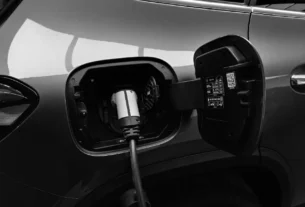Power seats have become a staple in modern vehicles, offering unparalleled adjustability for optimal driver comfort. These seats rely on complex mechanisms involving electric motors, gears, and tracks to move the seat in various directions. While providing convenience, these very mechanisms can introduce challenges when installing child safety seats. The primary concern stems from the potential for interference, particularly with forward-facing installations. The base of a child seat, especially those with rigid LATCH connectors, might obstruct the full range of motion of a power seat.
Identifying Potential Conflicts and Compatibility
Before attempting to install a child seat, it’s crucial to identify potential conflicts between the seat’s base and the power seat’s movement. Start by reviewing the vehicle’s owner’s manual for any warnings or guidance related to child seat installation with power seats. Next, physically inspect the area around the LATCH anchors and seat track. Look for any protrusions or components that might hinder the secure placement of the child seat’s base. Attempt to move the power seat through its full range of motion with the child seat base temporarily positioned to observe any direct contact or impedance.
Leveraging ISOFIX/LATCH Systems with Caution
ISOFIX (International Standards Organisation Fix) or LATCH (Lower Anchors and Tethers for Children) systems provide a standardized and secure method for attaching child seats directly to the vehicle’s frame. While generally reliable, even these systems can present challenges with power seats. The lower anchor points might be positioned near the power seat’s mechanism, potentially causing interference when the child seat is connected. Moreover, the top tether anchor point, often located on the vehicle’s rear shelf or seatback, could be affected by the power seat’s reclining function. It’s paramount to ensure that using the tether does not compromise the seat’s operation or create undue stress on the tether itself. Going for the Auto Repair in Bealeton, VA based service would be essential here.
Alternative Installation Methods: Seat Belts and Spacers
If direct interference occurs with the ISOFIX/LATCH system, utilizing the vehicle’s seat belts for installation might be necessary. Though slightly more complicated, seat belt installation can be equally secure if performed correctly. Study the child seat’s manual thoroughly and follow the instructions carefully. Ensure the seat belt is locked correctly and that the child seat is tightly secured, minimizing any movement. Additionally, consider using spacers or firm padding if the child seat is incompatible with the car’s seats natural shape, as is often the reason they move around after you think they’re installed correctly.
Professional Assistance and Ongoing Monitoring
When in doubt, seeking professional assistance from a certified Child Passenger Safety Technician (CPST) is highly recommended. CPSTs possess the expertise to identify potential conflicts, recommend appropriate installation methods, and ensure the child seat is correctly secured. Furthermore, it’s essential to regularly monitor the installation of the child seat, checking for any looseness or changes in positioning, especially after using the power seats. Routine inspections help maintain the child’s safety and well-being, providing peace of mind for parents and caregivers.




